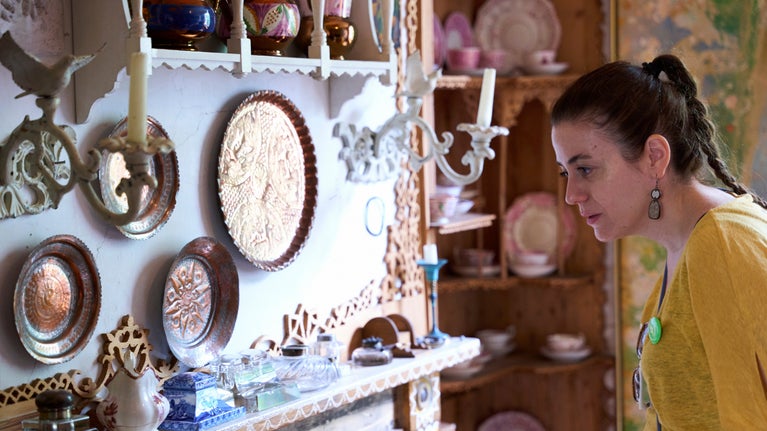
Art and collections
We care for one of the world's largest and most significant collections of art and heritage objects. Explore the highlights, our latest major exhibitions, curatorial research and more.

We look after one of the world’s largest and most significant holdings of fine art and heritage objects, including over 400,000 book titles – a treasure chest of history. With over 200 collections, no other organisation conserves such a range of heritage locations with buildings, contents, gardens and settings intact, nor provides such extensive public access.
Many of the works of art, furniture and other objects in our collections were commissioned, acquired and accumulated by past owners over many centuries, as contemporary furnishings and dazzling displays.
We also look after several discrete museum collections including, but not limited to, the Carriage Museum at Arlington Court, Devon, the National Trust Museum of Childhood at Sudbury Hall, Derbyshire, and the Fox Talbot Museum in Lacock, Wiltshire.

Our collections offer you the chance to uncover a broad spectrum of social, political, scientific and industrial histories. The lives and occupations of former inhabitants of our places are quietly evoked, illuminated by their surviving personal treasures.
Frequently these were conscious creations – personal statements of taste, patronage, lineage and social status. High fashion, design and superb craftsmanship were the order of the day.
But not all places are grand treasure houses. Many are small and not at all ostentatious, with deep personal associations, sometimes to an individual writer, politician, architect, poet or composer.
Many historic libraries also survive remarkably intact, conjuring up a special atmosphere of personal study and reflection. They range from those of wealthy collectors to those formed with more practical and provincial ambitions. Some were formed by significant literary figures, such as the writers Rudyard Kipling and George Bernard Shaw.

The global nature of our collections is a product of the intertwined lives of historic house residents and their participation in world markets, politics, diplomacy and travel. We have particularly diverse Asian collections. Early networks of trade in China have long influenced the decorative schemes and collections for many of our places. Establishing direct control of British India (today India, Pakistan, and Bangladesh) means that South Asian crafts, diverse religious items, textiles, photographs and weaponry are also well reflected.
Archaeological sites in Britain tell stories that are thousands of years old, through surviving artefacts, structures and landscape features.
The National Trust looks after over 90,000 archaeological sites situated across 250,000 hectares (617,763 acres) of land.
These include parts of nine World Heritage Sites, over 1,700 scheduled monuments of national importance and thousands of ancient artefacts.
Special collections, displays and ever-changing exhibitions can now be enjoyed at many places, inviting discovery of the full extent of our holdings.
With over a million objects – with internationally significant collections of paintings, furniture, ceramics, books, tapestries and more – there is no shortage of choice.

We care for one of the world's largest and most significant collections of art and heritage objects. Explore the highlights, our latest major exhibitions, curatorial research and more.

Discover the stories behind some of the greatest artworks and artefacts looked after by the National Trust, as told in a dedicated book, 125 Treasures from the Collections of the National Trust.

Explore a selection from more than half a million books and manuscripts in the collections we care for. Libraries Curator Tim Pye takes a closer look at some of the most significant works.

We publish two illustrated research journals every year, containing expert insights into our places and collections, curatorial content, and the latest conservation news.

The 13,000 oil paintings in our care are nearly all displayed in the houses of their historic owners. Learn about the stories behind a selection of the artworks and their owners.